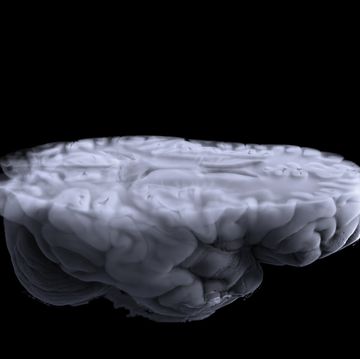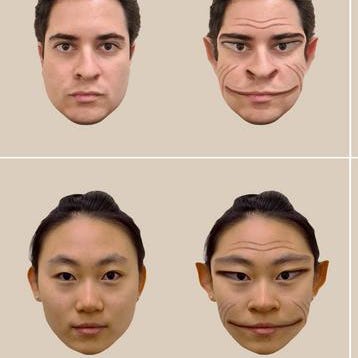- A 2008 study was the first official research noting that a single genetic mutation from less than 10,000 years ago kicked off blue eyes.
- Fifteen years later and we're still enamored with the concept of a single ancestor for all blue-eyed folks.
- Eye color stems from varying amounts of a pigment called melanin, which also dictates hair and skin colors.
In 2008, a study led by Hans Eiberg from the University of Copenhagen claimed that all blue eyes link back to a single ancestor who lived between 6,000 and 10,000 years ago. The concept has continually cropped up in news stories and social media posts over the 15 years since the paper was released. Simply put, we remain enamored.
But where did the concept come from? That 2008 study in was built on research that started in 1996, and it all focused on genetic exploration of the OCA2 gene.
The research shows that the OCA2 gene codes play a key role in the production of melanin, the pigment that colors hair, skin, and eyes. Eiberg's theory is that a mutation occurred between 6,000 and 10,000 years ago that switched on the ability for the gene to dilute brown eyes to blue.
"Originally, we all had brown eyes," he said in 2008. "But a genetic mutation affecting the OCA2 gene in our chromosomes resulted in the creation of a switch, which literally turned off the ability to produce brown eyes."
Every eye color links directly to the volume of melanin in the iris. Green eyes, even more rare than blue, marks a reduced level of melanin, thought not as reduced as blue eyes. It only takes a miniscule change to shift from brown to blue. "From this we can conclude that all blue-eyed individuals are linked to the same ancestor," Eiberg says. "They have all inherited the same switch at exactly the same spot in their DNA."
He refers to that that switch as a specific genetic mutation event, and believes that it only produced the first-ever blue-eyed human thanks to the mutation of the regulating HERC2 gene. The combination is the only known way eyes can turn blue (in contrast, red hair can happen for one of nearly a dozen reasons). That mutation remained in place for the next generation, meaning the reduced production of melanin in the iris allowed for the continued dilution of brown to blue.
Since that multi-thousand-years-ago switch, the progression of blue-eyed humans has only pushed forward. Multiple research papers concluded that the first mutation was probably somewhere in Europe, likely during the Neolithic expansion. The blue-eyed march continued as populations dispersed.
Roughly 10 percent of all humans have blue eyes, but that number varies wildly depending on regions, with Scandinavian countries having a higher propensity for blue eyes.
Deemed a neutral mutation, Eiberg says the eye-color example "simply shows that nature is constantly shuffling the human genome, creating a genetic cocktail of human chromosomes and trying out different changes as it does so."
Tim Newcomb is a journalist based in the Pacific Northwest. He covers stadiums, sneakers, gear, infrastructure, and more for a variety of publications, including Popular Mechanics. His favorite interviews have included sit-downs with Roger Federer in Switzerland, Kobe Bryant in Los Angeles, and Tinker Hatfield in Portland.













